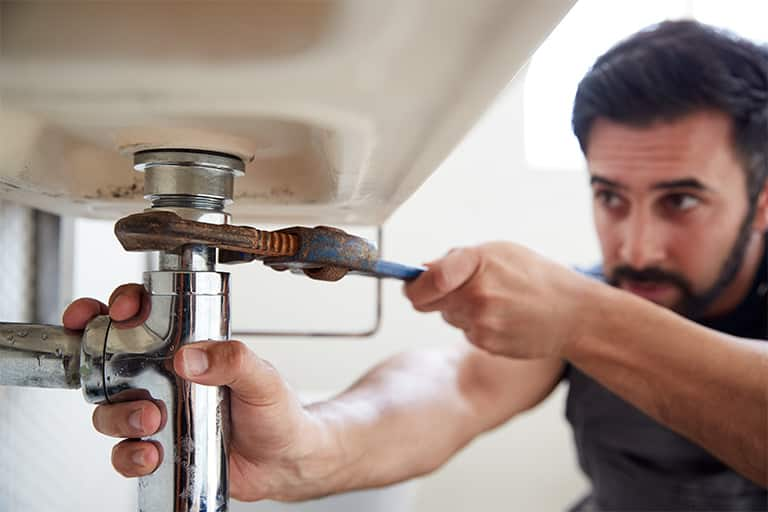Were you in search of advise on Locating water leaks?

Early discovery of leaking water lines can reduce a possible disaster. Aside from conserving you cash, it will lessen the aggravation and disappointment. The moment you find a leakage, calling your plumber for fixings is the most effective option. Nevertheless, some tiny water leaks might not show up. If you can not find it with your naked eyes, here are some hacks that aid.
1. Check Out the Water Meter
Every house has a water meter. Checking it is a guaranteed way that assists you uncover leaks. For starters, shut off all the water sources. Make sure no one will purge, make use of the faucet, shower, run the cleaning machine or dishwasher. From there, go to the meter as well as watch if it will change. Because no one is using it, there must be no movements. If it relocates, that shows a fast-moving leak. If you detect no changes, wait an hour or two as well as examine back once more. This means you may have a slow leakage that can also be below ground.
2. Check Water Intake
If you detect unexpected adjustments, despite your consumption being the exact same, it suggests that you have leakages in your plumbing system. A sudden spike in your bill suggests a fast-moving leakage.
At the same time, a steady increase monthly, despite the exact same behaviors, reveals you have a slow-moving leakage that's additionally gradually rising. Call a plumber to extensively examine your property, especially if you really feel a warm area on your flooring with piping beneath.
3. Do a Food Coloring Examination
When it involves water intake, 30% originates from commodes. Test to see if they are running appropriately. Drop flecks of food shade in the tank as well as wait 10 mins. There's a leak between the container as well as dish if the color in some way infiltrates your dish during that time without flushing.
4. Asses Exterior Lines
Do not forget to examine your outside water lines too. Needs to water leak out of the link, you have a loosened rubber gasket. One tiny leakage can waste tons of water as well as spike your water expense.
5. Examine and also Examine the Circumstance
Property owners ought to make it a behavior to inspect under the sink counters and also inside cupboards for any kind of bad odor or mold development. These 2 red flags indicate a leakage so prompt interest is required. Doing routine inspections, also bi-annually, can save you from a major problem.
Examine for stainings and also weakening as most pipelines as well as home appliances have a life expectations. If you think leaking water lines in your plumbing system, don't wait for it to rise.
Early discovery of dripping water lines can reduce a prospective disaster. Some tiny water leakages might not be visible. Inspecting it is a surefire method that aids you discover leakages. One little leakage can waste tons of water and also spike your water costs.
If you believe leaking water lines in your plumbing system, don't wait for it to rise.
WARNING SIGNS OF WATER LEAKAGE BEHIND THE WALL
PERSISTENT MUSTY ODORS
As water slowly drips from a leaky pipe inside the wall, flooring and sheetrock stay damp and develop an odor similar to wet cardboard. It generates a musty smell that can help you find hidden leaks.
MOLD IN UNUSUAL AREAS
Mold usually grows in wet areas like kitchens, baths and laundry rooms. If you spot the stuff on walls or baseboards in other rooms of the house, it’s a good indicator of undetected water leaks.
STAINS THAT GROW
When mold thrives around a leaky pipe, it sometimes takes hold on the inside surface of the affected wall. A growing stain on otherwise clean sheetrock is often your sign of a hidden plumbing problem.
PEELING OR BUBBLING WALLPAPER / PAINT
This clue is easy to miss in rooms that don’t get much use. When you see wallpaper separating along seams or paint bubbling or flaking off the wall, blame sheetrock that stays wet because of an undetected leak.
BUCKLED CEILINGS AND STAINED FLOORS
If ceilings or floors in bathrooms, kitchens or laundry areas develop structural problems, don’t rule out constant damp inside the walls. Wet sheetrock can affect adjacent framing, flooring and ceilings.
https://www.servicemasterbyzaba.com/blog/how-to-detect-water-leakage-in-walls/

I ran across that blog entry on Hacks to detect leaks while looking around the internet. Sharing is caring. You never know, you may just be doing someone a favor. I am grateful for your time. Kindly pay a visit to our site back soon.